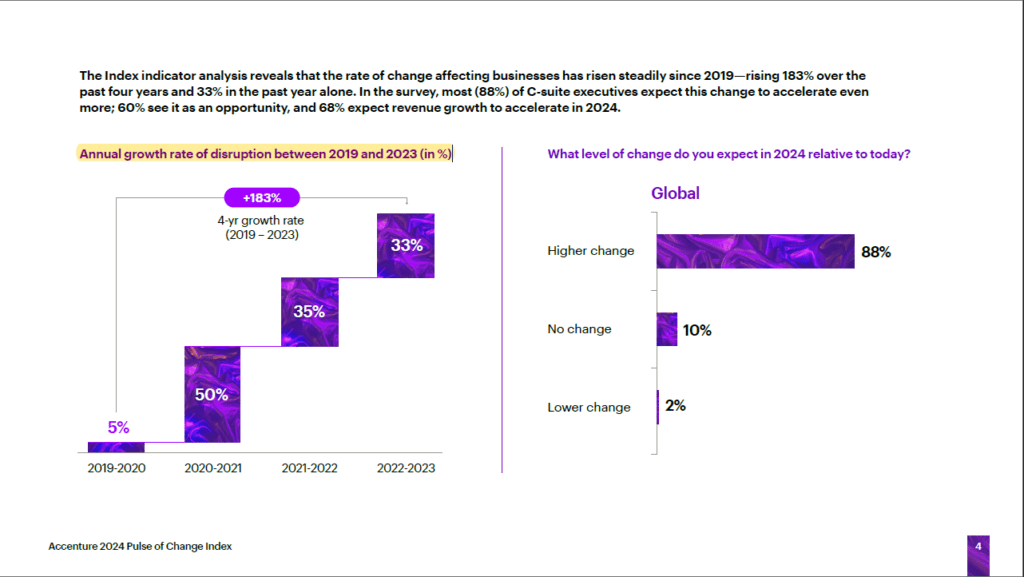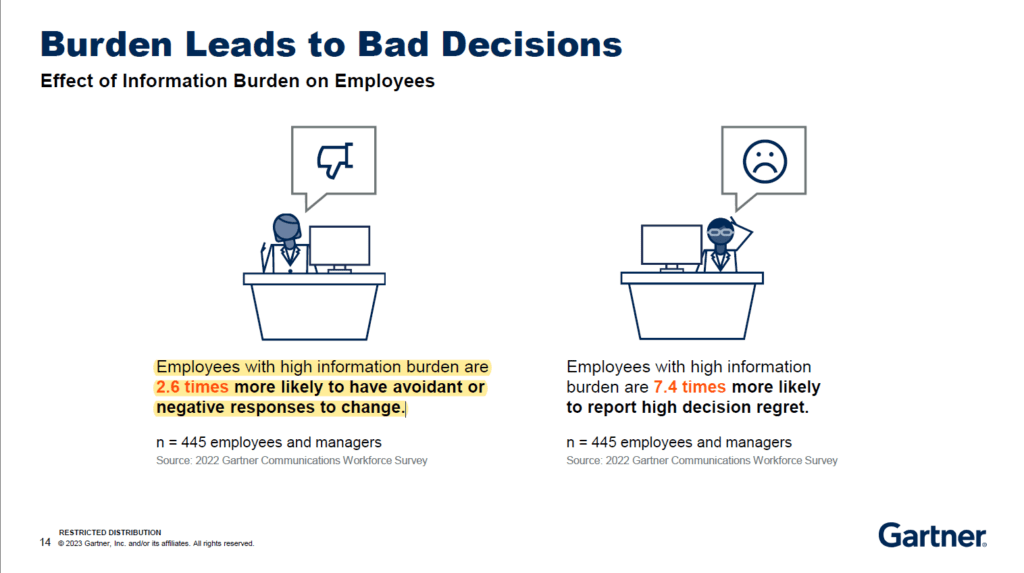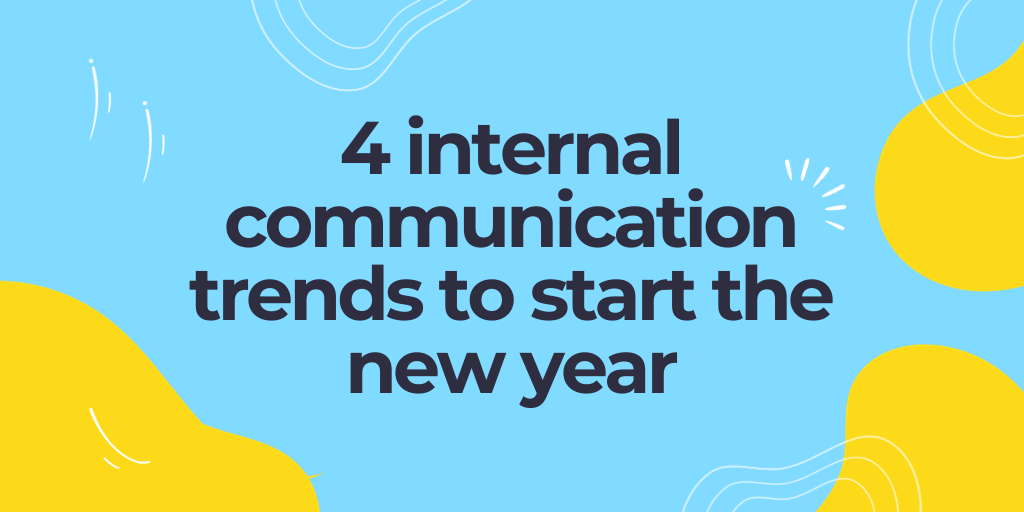“We have entered a new era. Call it the age of perpetual organizational upheaval,” says McKinsey. The need to prepare a company for constant change is a common narrative in the corporate world. Yet, transformations remain one of the most challenging processes for people to embrace. In this blog post, I delve into the reasons behind change resistance. I also explore how effective internal communication is key to helping people thrive during organizational transformations.
Content
- Old habits die hard: What is resistance to change?
- Why is important to recognize and manage change resistance?
- 1 | Create a low-burden internal communication workplace culture
- 2 | Audience segmentation and employee personas
- 3| Encourage ownership and employee participation in the decision-making process
Old habits die hard: What is resistance to change?
Over the last 30 years, the world has experienced one shift after another thanks in part to the internet and globalization. Today, more than ever, we have become accustomed to accepting that change is the only constant in life.
Yet, until a few generations ago, most people’s lives stayed the same from beginning to end. Change, when it happened, generally meant danger. So, if fear of the unknown is a natural human instinct, resisting change is nothing more than an honest human reaction.
Acknowledging this is vital to leading people through transitions, addressing pushback effectively, and achieving organizational outcomes.
Why is important to recognize and manage change resistance?
A recent Accenture report shows that the rate of change has increased fast since 2019—183% over the past four years and 33% in the past year alone. Significantly, its C-suite survey reveals that 88% anticipate an even faster rate of change in 2024.
Organizational change seems to be happening everything everywhere all at once. It’s no surprise to hear, then, how employees can respond with skepticism to one more company transformation.
According to McKinsey, 70% of change initiatives fail, often due to employee resistance. For a transformational change, people in the organization must change their behavior. “It often means changing processes and procedures that have been in place forever,” according to the firm.


Against this backdrop, I analyze the role of effective change communication in resistance management. Here are three ways to make transitions easier.
1 | Create a low-burden internal communication workplace culture
In a 2023 Harvard Business Review article, consultants for Gartner explain how an employee wastes three hours and 27 minutes per week dealing with information burden. That’s everything from the emails you read, the meetings you attend, message chats you take in, intranet posts, and newsletters.
Equally important, information burden impacts a company’s ability to reduce change resistance. People feeling burdened at work are 2.5 times more likely to avoid or respond negatively to change. To make matters worse, Gartner reports that senior managers are even more overloaded than frontline employees.


In the same piece, information burden is defined as one that is duplicative, irrelevant, effort-intensive, and inconsistent. The numbers are eye-opening:
- 57% of employees often receive multiple communications about the same topics.
- 47% say that the company communications they receive are unrelated to their day-to-day responsibilities.
- 38% have to do extra work to keep up with the information they receive from their organization.
- 33% often receive inconsistent or conflicting messages.
But information volume alone isn’t the only culprit. Rather, the real problem is the information itself and the level of effort required to access and interpret information.
How can companies manage information load and reduce change resistance?
Some steps are fundamental to reducing information burden. The first thing to point out is that introducing a new tech tool won’t solve the problem. Artificial intelligence systems are still too expensive. Most companies will need to moderate their AI ambitions in the short term.
Organizations should instead establish clear expectations and norms for how information flows. Establish a shared governance that is visibly backed by the company management.
Companies like Dropbox and Levels Health have made their business communication rules and information exchange expectations openly available.
Constant change only compounds confusion about what good behavior looks like. Thus, internal alignment and mutual understanding of how information should be shared within the organization will improve psychological safety and empower employees.
Here, the internal comms function should take the lead and influence company leaders in bringing the employees’ perspective to this matter in order to improve the employee experience.
2 | Audience segmentation and employee personas
Identifying subgroups within your target audience is essential to ensure that awareness messages are specific for each cluster’s context and pain points.
At a minimum, your plan for communicating with your target audience should do the following:
- Identify and segment audience groups.
- Determine the appropriate messages for each audience.
- Develop the most effective packaging, timing, and communication channels.
- Identify the preferred senders for each message.
This information will help you in creating employee personas. In a broader sense, personas are fictional characters used to understand users’ needs, experiences, behaviors, and goals. They represent different groups of people who use your service, product, website, or brand.
The information required for this exercise will likely be available to your employee communication team. They will help you segment your audience and create customized content matching your personas.
3| Encourage ownership and employee participation in the decision-making process
Include employees in new processes or tech rollouts to gather their insights and concerns, as well as to foster inclusion.
Josh Bersin has recently coined the term “employee activation” to illustrate the idea of a workplace structure that goes beyond traditional notions of workforce engagement to open a new approach to employee listening and feedback-based action-taking.
However, giving people ownership and involving them in the change management process to improve employee engagement has been introduced before. Back in 2022, Gartner already recommended an open-source approach to engaging colleagues in change initiatives.
Here, internal communication professionals have the expertise to create physical and virtual mechanisms to help employees and management leaders engage in two-way conversations. Some common examples are:
- Town halls that allow question submissions and voting platforms for employees to engage with executive leaders during the Q&A.
- Identify change champions to facilitate communication between employees and leadership, collect feedback from their respective groups, and provide valuable insights.
- Create systems to give visibility and recognition to those employees who provide constructive feedback.
The months ahead will likely be hectic. Acknowledging the human nature of change resistance is not just a strategic choice; it’s a necessity. Internal comms can act as a partner and advise organizations to reduce the risks and consequences of bumping transitions.


